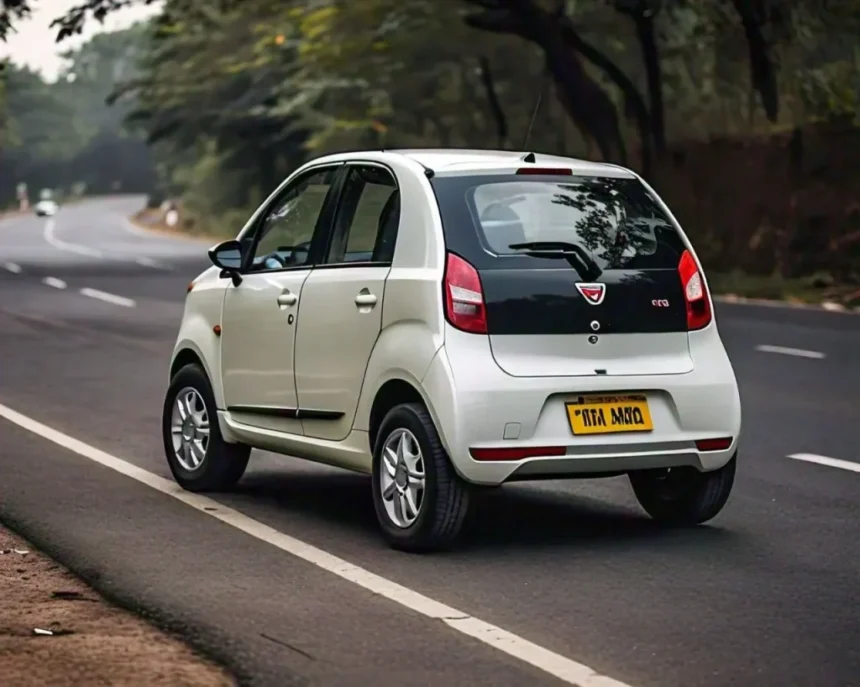The Tata Nano, often dubbed the world’s cheapest car, has carved a unique niche in automotive history. Launched in 2008 by Tata Motors, this small vehicle was aimed at providing affordable transportation to millions of Indian families. But what seemed like a simple solution turned into an extraordinary journey filled with innovation and challenges. As we delve into the incredible impact of https://guia-automovil.com/
History of the Tata Nano
The history of the Tata Nano began in early 2000 when Ratan Tata envisioned a safe and affordable car for Indian families. The goal was clear: create a vehicle that would serve as an alternative to two-wheelers, providing safety and comfort.
In 2008, after years of research and development, the Nano made its grand debut at the Delhi Auto Expo. It captured global attention with its price tag of just around $2,500. This innovation aimed to redefine access to personal transportation.
However, launching the Nano wasn’t without hurdles. Initial production challenges arose as expectations soared. Despite this, Tata Motors remained committed to delivering on their promise of affordability while maintaining quality standards.
By offering impressive fuel efficiency and compact design, it quickly gained popularity among budget-conscious consumers seeking reliable mobility solutions. The journey had only just begun; many eyes were watching how this little giant would navigate through time.
The Revolutionary Features of the Tata Nano
The Tata Nano introduced a new era in affordable transportation. It was engineered to be the world’s cheapest car, with an initial price tag that amazed many.
One of its standout features was the compact size. This allowed for easy navigation through crowded streets and tight parking spaces, making it practical for urban settings.
Fuel efficiency was another revolutionary aspect. With impressive mileage figures, it appealed to budget-conscious consumers looking for economical options.
Safety didn’t take a back seat either. Despite its low cost, the Nano included essential safety features like crumple zones and a sturdy body structure designed to protect occupants.
Moreover, Tata’s innovative design incorporated ample space within its small frame. Passengers enjoyed comfort without compromising on style or functionality—truly redefining what an entry-level vehicle could offer.
Effect on the Indian Market
The Tata Nano made waves when it launched as the world’s cheapest car. Priced to cater to budget-conscious families, it aimed to make car ownership accessible for millions in India.
Its introduction shifted consumer perception significantly. Suddenly, a personal vehicle was within reach for those who previously relied on two-wheelers or public transport. This democratization of mobility transformed daily commutes and family travel.
Moreover, the Nano catalyzed competition among automobile manufacturers. Other companies began developing affordable models, increasing choices available to Indian consumers.
This shift not only revolutionized personal transportation but also influenced urban planning and infrastructure development across cities. As more people embraced four-wheeled vehicles, traffic patterns evolved dramatically.
Despite its challenges later on, the Tata Nano undeniably altered India’s automotive landscape forever. It created new opportunities while pushing established norms about affordability and functionality in automobiles.
Global Recognition and Expansion
The Tata Nano captured global attention as a symbol of affordable innovation. Its debut at the 2008 Auto Expo in New Delhi was nothing short of groundbreaking. It promised to provide an economical alternative for millions seeking personal mobility.
International media hailed it as the world’s cheapest car, stirring discussions on urban transportation solutions. This recognition opened doors for Tata Motors beyond India’s borders.
In response to this acclaim, Tata explored markets in Africa and Southeast Asia. The vision was clear: extend accessibility while maintaining affordability. Strategic partnerships followed, aiming to adapt the Nano’s features to various regional demands.
Despite its challenges, the potential for expansion remained strong. Countries with burgeoning middle classes showed interest in low-cost vehicles like the Nano. This demonstrated that even amidst hurdles, a desire for accessible automotive options persisted globally.
Challenges and Controversies Faced by Tata Nano
The Tata Nano faced significant challenges from the outset. Initially marketed as the world’s cheapest car, it attracted immense curiosity and skepticism alike.
Safety concerns loomed large in public perception. Early reports of fires raised alarms among potential buyers, causing many to question its reliability.
Production issues also hindered growth. The ambitious plan to manufacture at an unprecedented low cost encountered numerous logistical hurdles.
Moreover, competition intensified as other manufacturers recognized the lucrative small-car segment. Rivals quickly introduced their own budget-friendly models, creating a saturated market landscape.
The social implications were profound too. While some hailed it as a symbol of innovation, others criticized it for promoting increased car ownership in congested urban areas.
This mixture of excitement and apprehension ultimately shaped the Nano’s journey through India’s automotive landscape.
Future Plans for the Tata Nano
The future of the Tata Nano holds exciting possibilities. With a growing emphasis on sustainability, Tata Motors is exploring electric variants of this compact vehicle. Transitioning to electric power could enhance its appeal in urban markets.
Additionally, there are discussions about integrating smart technology into the Nano lineup. Features like connectivity and autonomous driving capabilities may soon become standard.
Tata aims to tap into emerging markets as well. By tailoring features to local preferences, they can reach new consumers across borders.
Revamping marketing strategies is also on the agenda. Engaging prospective buyers through innovative campaigns can reignite interest in this legendary model.
Partnerships with tech firms might shape how the Nano evolves in terms of design and functionality. The potential for collaboration opens doors for fresh ideas and development pathways that resonate with modern drivers.
Conclusion
The Tata Nano represents more than just a vehicle; it symbolizes innovation and ambition in the automotive sector. With its fascinating history, marked by aspirations to make car ownership accessible to millions, the Nano set out to change perceptions about affordable vehicles.
Its revolutionary features caught global attention, showcasing practicality without compromising on safety or efficiency. This unique positioning allowed it to carve a niche in the Indian market, where it ignited conversations about transportation and mobility for lower-income families.
While global recognition helped elevate its status further, challenges surfaced along the way. Controversies regarding safety concerns and production setbacks tested Tata Motors’ resolve. Yet these hurdles only seem to be stepping stones toward improvement and growth.
Looking forward, there are whispers of future plans that might reinvigorate interest in this iconic model. Whether through technological advancements or design updates, there’s potential for transformation ahead.
The journey of https://guia-automovil.com/










